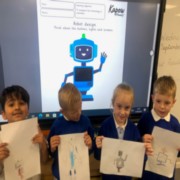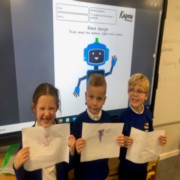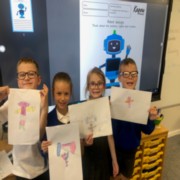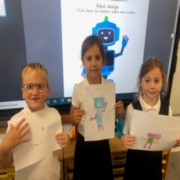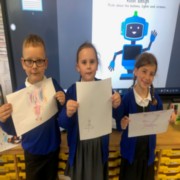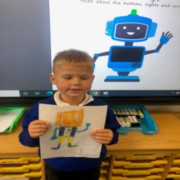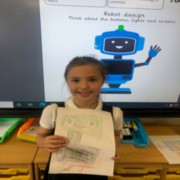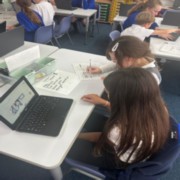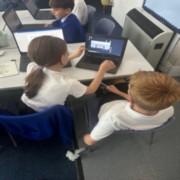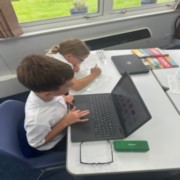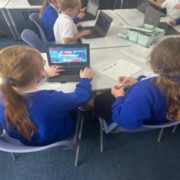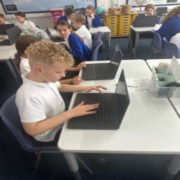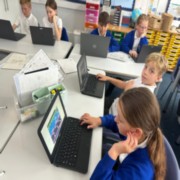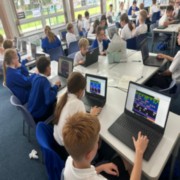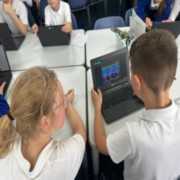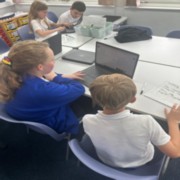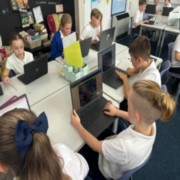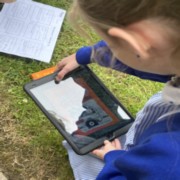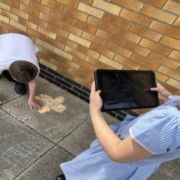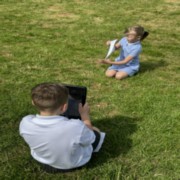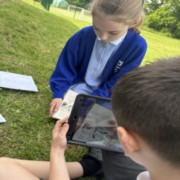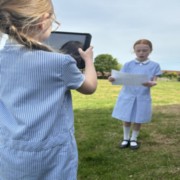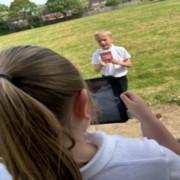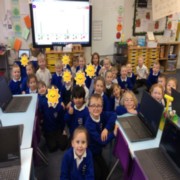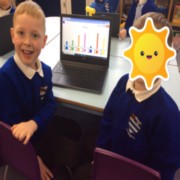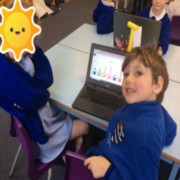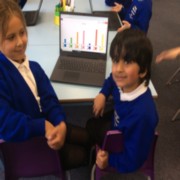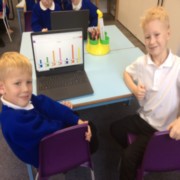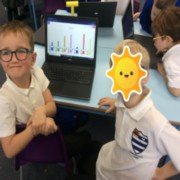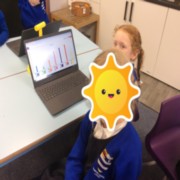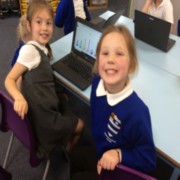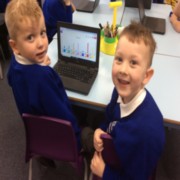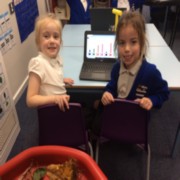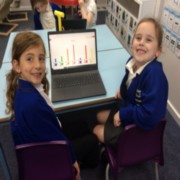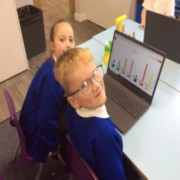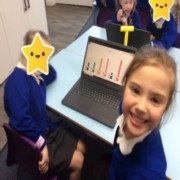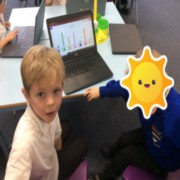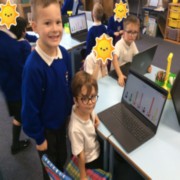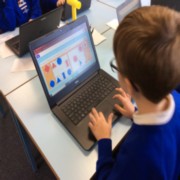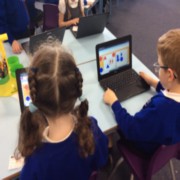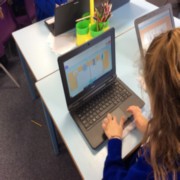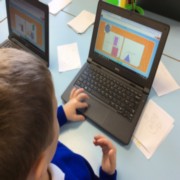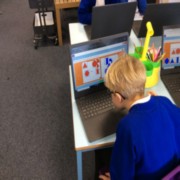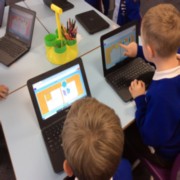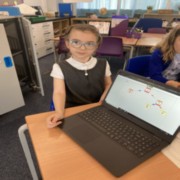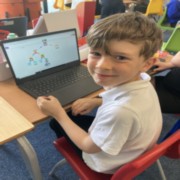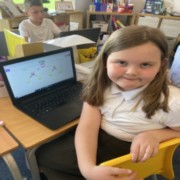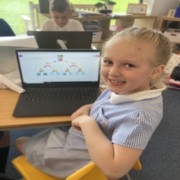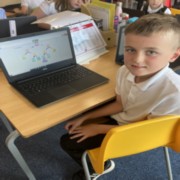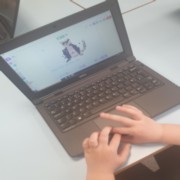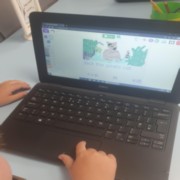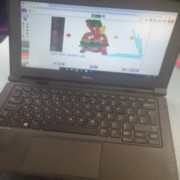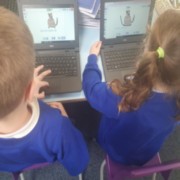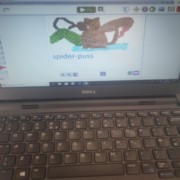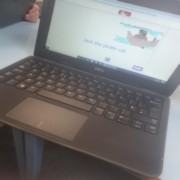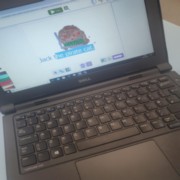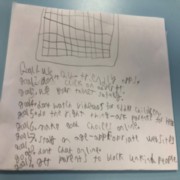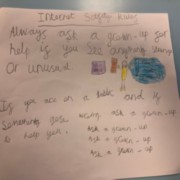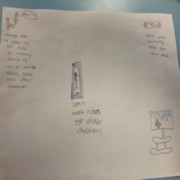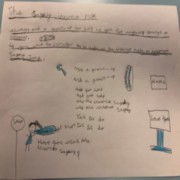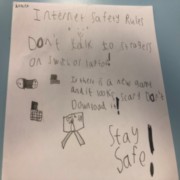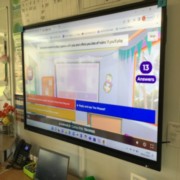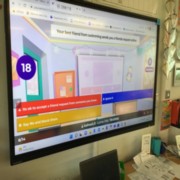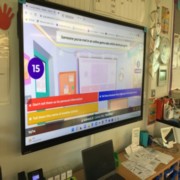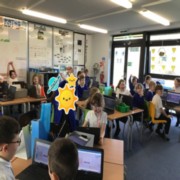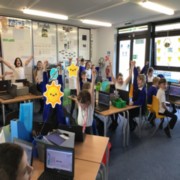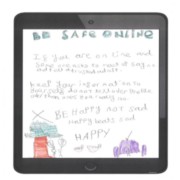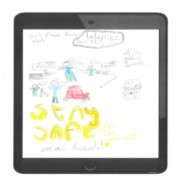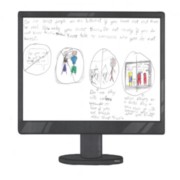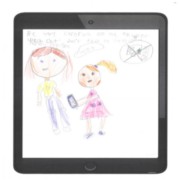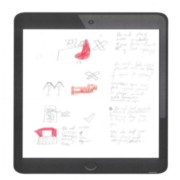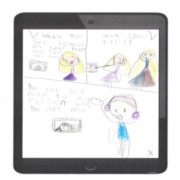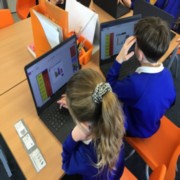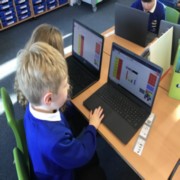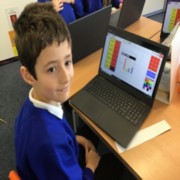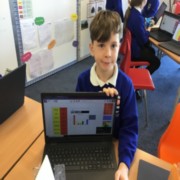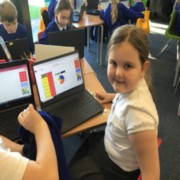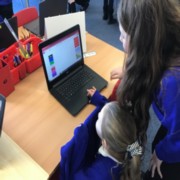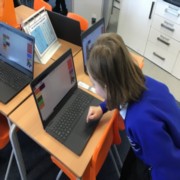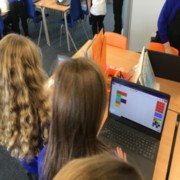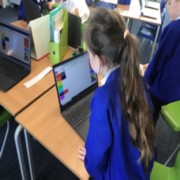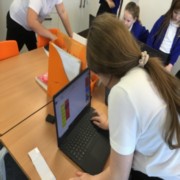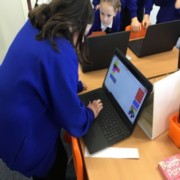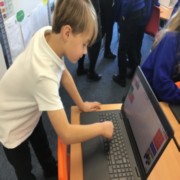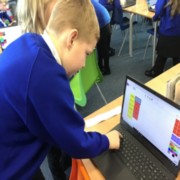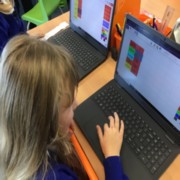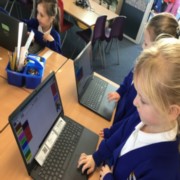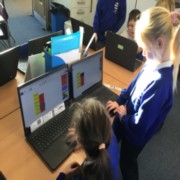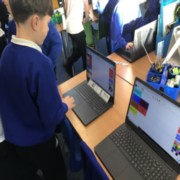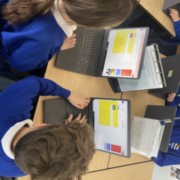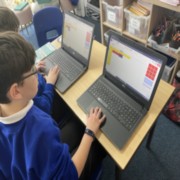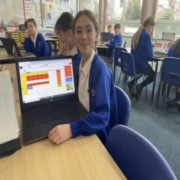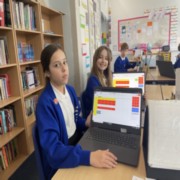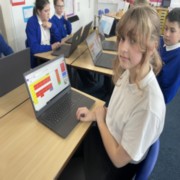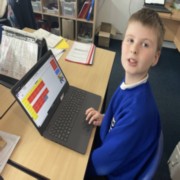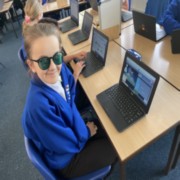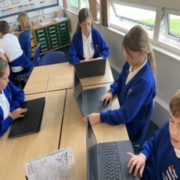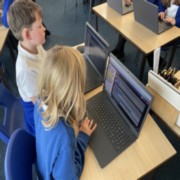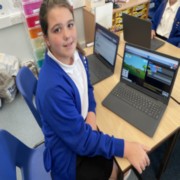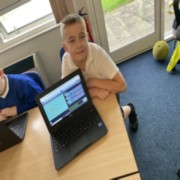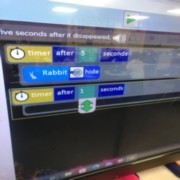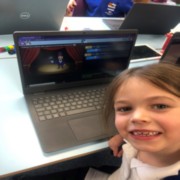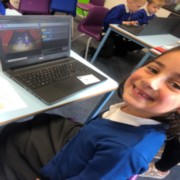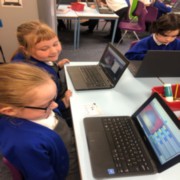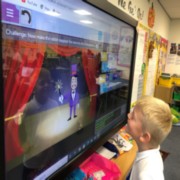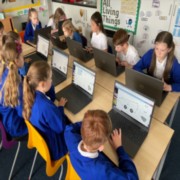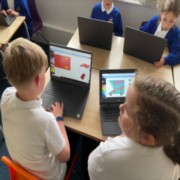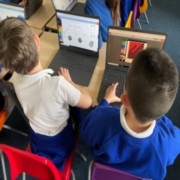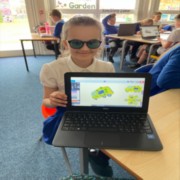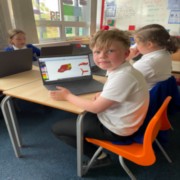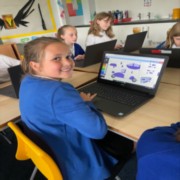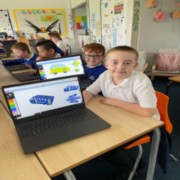Computing
Intent
When planning and teaching computing at Laceby Stanford Primary Academy, we believe that it is an essential part of the curriculum; a subject that not only stands alone but is woven and should be an integral part of all learning. Computing, in general, is a significant part of everyone’s daily life and children should be at the forefront of new technology, with a thirst for learning what is out there. Computing within schools can therefore provide a wealth of learning opportunities and transferrable skills explicitly within the Computing lesson and across other curriculum subjects.
Through the study of Computing, children will be able to develop a wide range of fundamental skills, knowledge and understanding that will actually equip them for the rest of their life. Computers and technology are such a part of everyday life that our children would be at a disadvantage would they not be exposed to a thorough and robust Computing curriculum. Children must be taught in the art form of ‘Computational Thinking’ in order to provide them essential knowledge that will enable them to participate effectively and safely in the digital world beyond our gates.
Implementation
In Early Years provision will be exposed to the understanding of internet safety as they explore the world around them and how technology is an everyday part of their learning and understanding of the world.
Children in both KS1 and KS2 are taught in weekly sessions by their class teacher as detailed below:-
Key stage 1
Pupils should be taught to:
- understand what algorithms are; how they are implemented as programs on digital devices; and that programs execute by following precise and unambiguous instructions
- create and debug simple programs
- use logical reasoning to predict the behaviour of simple programs
- use technology purposefully to create, organise, store, manipulate and retrieve digital content
- recognise common uses of information technology beyond school
- use technology safely and respectfully, keeping personal information private; identify where to go for help and support when they have concerns about content or contact on the internet or other online technologies.
Key stage 2
Pupils should be taught to:
- design, write and debug programs that accomplish specific goals, including controlling or simulating physical systems; solve problems by decomposing them into smaller parts
- use sequence, selection, and repetition in programs; work with variables and various forms of input and output
- use logical reasoning to explain how some simple algorithms work and to detect and correct errors in algorithms and programs
- understand computer networks including the internet; how they can provide multiple services, such as the world wide web; and the opportunities they offer for communication and collaboration
- use search technologies effectively, appreciate how results are selected and ranked, and be discerning in evaluating digital content
- select, use and combine a variety of software (including internet services) on a range of digital devices to design and create a range of programs, systems and content that accomplish given goals, including collecting, analysing, evaluating and presenting data and information
- use technology safely, respectfully and responsibly; recognise acceptable/unacceptable behaviour; identify a range of ways to report concerns about content and contact.
In addition to this technology is always available in the classrooms and is used throughout the day to enhance the children’s learning experience across other areas of the curriculum.
Impact
Our Computing curriculum will ensure all pupils develop key computing learning skills, as set out by the national curriculum.
Aims – to ensure that all pupils:
- can understand and apply the fundamental principles and concepts of computer science, including abstraction, logic, algorithms and data representation
- can analyse problems in computational terms, and have repeated practical experience of writing computer programs in order to solve such problems
- can evaluate and apply information technology, including new or unfamiliar technologies, analytically to solve problems
- are responsible, competent, confident and creative users of information and communication technology.
After the implementation of this robust computing curriculum, children at Laceby Stanford Primary Academy, will be digitally literate and able to join the rest of the world on its digital platform. They will be equipped, not only with the skills and knowledge to use technology effectively and for their own benefit, but more importantly – safely. The biggest impact we want on our children is that they understand the consequences of using the internet and that they are also aware of how to keep themselves safe online.
As children become more confident in their abilities in Computing, they will become more independent and key life skills such as problem-solving, logical thinking and self-evaluation become second nature.
Digital safety during COVID-19
A parents guide to the new National Curriculum (not Foundation/Seedlngs class). More information can be found on the Rising Stars website
Scratch Community is a fantastic programming resource for learners of all ages. What better place to start than a site dedicated specifically for those who want to use Scratch to learn programming? Here you will find videos, lesson plans, worksheets, discussions and even real people to ask for help.
Codecademy is the web resource that does exactly what it says on the tin. This is a good starting point to discover what computer programming (in JavaScript) can be like. Sometimes unforgiving if you get your syntax wrong (that's spelling, punctuation and grammar in computer speak). You get feedback as you progress and learners can compare their score with each other.
Or for a more game based approach try code.org
BBC Bitsize always has lots of useful information and resources to get to grips with Computing
Making music in Scratch
Today in Year 3 computing we have been using repetition to create a loop in a program (Scratch.) We used blocks of code containing loops to program music. We used key vocabulary such as loop which is a repeated sequence of instruction and repetition doing something over and over again.




Computing Creativity
Year 2 have been recognising how technology can be controlled. So they have been designing their own robots with screens, buttons and lights. Some robots even had remote and voice controls!
We are computer technicians 💻
In Year 6 we have been discovering the evolution of computers overtime and identifying the use of code breaking and password hacking. Today we took a step back in time and had a try of the ‘retro’ arcade game - Frogger - which was originally released in 1981.
Barley class thoroughly enjoyed this journey into the past and were shocked by the advancements in gaming software. Games today are no longer ‘pixelated’. We then began research into Bletchley Park, historical figures within computing and what some of the first computers were really like!
Creating a book trailer
In pumpkin class today for our computing lesson we have been taking photos or videos that tell a story to create a book trailer. We have been framing shots differently to create the desired effect we wanted using iPads. We used the storyboards created in our last lesson to help us film/photograph key events.
Stone Age Quizzes
In Pumpkin class today to finish off our topic of the Stone Age in History we used our retrieval quizzes we made to make a quiz on Kahoot!
Well done to team soccer city on their victory.
“It was really fun”
“I was so excited the whole time!”



Safer Internet Day
Mrs. Hill led an important assembly today about how we can stay safe online. This week the children will be learning more about how to stay safe online in their lessons.
H- I found out that lots of people think about staying safe and it’s not just in school. Sports clubs and charities have to learn about it.
J- I like to play on my X-Box and talk to my friends.
E- I love to play games on my phones.
C- The internet is good for playing games with friends.
J- I like virtual games when I put on my headset.
R- I think it’s important to know who you are talking to online.
A- You should never tell anyone your personal details.
M- Don’t click adverts that pop up. They might give your computer a virus.
L- Always tell a trusted adult if you are worried about anything you’ve seen that makes you feel worried or scared.


Spoof websites
Pumpkin class has been focusing on E-Safety in ICT this week. We looked at examples of 'spoof' web pages and how we can tell if the information on these sites are accurate or not. We then had ago at creating our own 'spoof' web pages.
"I did mine about a player going to a football club when they aren't"
"I created a 'spoof' web page about spotting unicorns at Stanford"
"I wrote about elves helping at Christmas"
Year 1 - Learning About Pictograms
We have been learning about pictograms. This is where pictures are used to show data in graphs and charts. First we made a pictogram as a class then the children worked in pairs to create their own.
Digital Footprint 👣
In Computing, Barley class learnt about the digital footprint and how and why people use their information and online presence to create an image of themselves. They then looked at what information is appropriate to be shared online and identified what could be changed/ improved to keep them safe.



Interactive Scenes
Today in computing Pumpkin class have been designing and creating their own interactive scenes. Children planned their scenes using different algorithms and made several things happen in the scenes.




Using Maths Games to Practise our Computing Skills
This week in Year 1 we have been developing our computer skills, learning to ‘grab and drop’ using a laptop.
We got really good at using the two handed skill to sort shapes and other objects in different ways on the Purple Mash Games site.
Pupil 1: ‘I found it tricky but I’m getting better with practise.’
Pupil 2: ‘I worked with my partner and showed her how to do it.’
Pupil 3: ‘I love using the laptops, we can all have our own.’
Animation
This week in computers we have been extending our knowledge on animation. All the children learnt about " onion skinning" which is a process where the shadow image of the previous frame is present to help line up the objects of the animation correctly.
They were also able to add backgrounds and sound to their animation.



Year 3 Computing: Branching Databases
We have been learning about Branching Databases. Computers use these to sort out data using questions with yes/no answers. The children had lots of fun coming up with their own branching databases.
Animated stories
In Year 1 Computing we have been designing our own animated story book. We have been adding animations and drawing on a picture. Next week we will be adding sounds to our stories.
Writing for different audiences
Our new topic in ICT is" writing for different audiences." We discussed a variety of written material where the font size and type are tailed to the purpose of the text. Then we used text formatting to make a piece of writing fit for its audience and purpose.



Maze Explorers
Today in Year 1 Computing we have been maze explorers. We used the direction keys to successfully complete the maze.


Safer Internet Week
Foundation Stage
Foundation Stage learned the importance of being safe on the internet this week during Safer Internet Day. We learned the story of 'Chicken Clicking' that showed us that we should always be with one of our parents/carers when we go on the internet. Lots of us made pictures of us with our family playing on computer games or made model laptops that we played on with friends.



Pumpkin Class
Pumpkin Class have been discussing ways to keep safe when they are online. They think it is important to tell an adult if they see anything on the internet that worries them. They thought it was important to send out safety messages, to help other children know what to do.
M- Don’t share personal information with people online, like your name and where you live.
V- Let your mum or dad see what you are playing on.
T- Don’t have chats online with strangers.
H- If someone is saying horrible things online, get your mum to block them.
Year 3
As a part of our learning about internet safety the children took part in an online safety quiz on Kahoot set by Miss Perrin. The children got very competitive with this! Afterwards the children made posters to show their learning and to offer advice to others.
Juniper Class
Juniper class have been learning about internet safety week, we did a quiz on Kahoot to retrieve our past knowledge and remind ourselves on the ‘SMART’ rules! We then took this learning and created a leaflet on how to be smart online making sure it had all the key information on it.
Year 6
This week in Year 6, we watched a very interesting, live Safer Internet Assembly. This aided lots of discussion regarding internet scams, how to identify safe websites and the precautions to take when sharing anything online.
We then able to make our Safer Internet Charters- explaining what kind of place we would like the internet to be and how this can be achieved.
Year 3 - Spreadsheets - Creating bar graphs & pie charts
In our computing lessons we have been learning about spreadsheets and how we can use them to collate information. We have now found out how to turn this information into charts & graphs so the information can be presented in a visual and easily interpretable form
Creating bar charts of weather data linked to Rainforest learning in geography
In our computer lessons we have been learning all about spread sheets, and how to make a bar chart using the information we input into 2 Calculate.
We thought it would be interesting to create a bar chart using the data we have found out in our geography lessons exploring the climate in Manaus and London.
We are going to use the bar chart to compare and analyse the information.




Year 3 – Retrieval practice

To help with our learning & retrieval practice we have started using Kahoot with its interactive quizzes. Miss Perrin sets questions for the children to answer about our previous learning. This week it was ‘Rocks & Soils’. The children really enjoyed this and got quite competitive!
Year 6 Computing 💻
Year 6 pupils have been using spreadsheets to calculate the discount and final prices in a sale. They created formulas to help work out the prices of items in the sale!
Creating Penguin Art
Pumpkin Class enjoyed creating pictures of different kinds of penguins on their laptops, using the 2paint program on Purple Mash.
A- I love drawing pictures and trying out the different colours and different sized pens.
G- I looked at pictures of real penguins first, so I could get the shape and colours right.
J- I like drawing pictures on Purple Mash because I can save them and work on them later.
Sometimes I do some more drawing at home.
L- I like penguins. I like to draw them.




Y3- Being a computer programmer
The children have been learning about how programs are made using coding. This week they were asked to showcase these skills by making an interactive digital scene where buttons were clicked to make different things happen. They really enjoyed this task and gave it a Halloween twist!
Year 6 Coding- Functions 💻
Pupils in Year 6 were understanding how functions are used and how useful they are when coding. They organised codes into functions and Call functions to eliminate surplus codes in the program.
Computing: Using a Timer
Pumpkin Class have been learning about algorithms in their computing lessons. In this lesson they were creating a program on Purple Mash and using a timer-after command.
E- I like this program, it’s called The Magician.
R- I could make the rabbit disappear and then appear again.
H- You have to get your instruction in the right order or it doesn’t work.
J- I set different timers so that the magician could move sideways and then the rabbit could change into a frog after 10 seconds.
Juniper Class: 3D Modelling 🚗 🛻 🚐 🚌
In Computing Juniper pupils are using the 2Design and Make tool to explore the effects of moving points when designing a 3D model.
Pupils were adapting one of the vehicle models by moving pints to alter the shape of the vehicle while still maintaining its form.
Barley Class: Blogging
In Barley class we are learning about blogging this half term. In this lesson we were working collaboratively to plan a blog based on our time at Stanford School. We used the mapping tool to plan and record our ideas.



Juniper Class- Game Creator
Juniper class have started to create their own game environment this week, with a specific theme linked to our topic on Vikings. We uploaded images and used different tools to design and create our setting.




